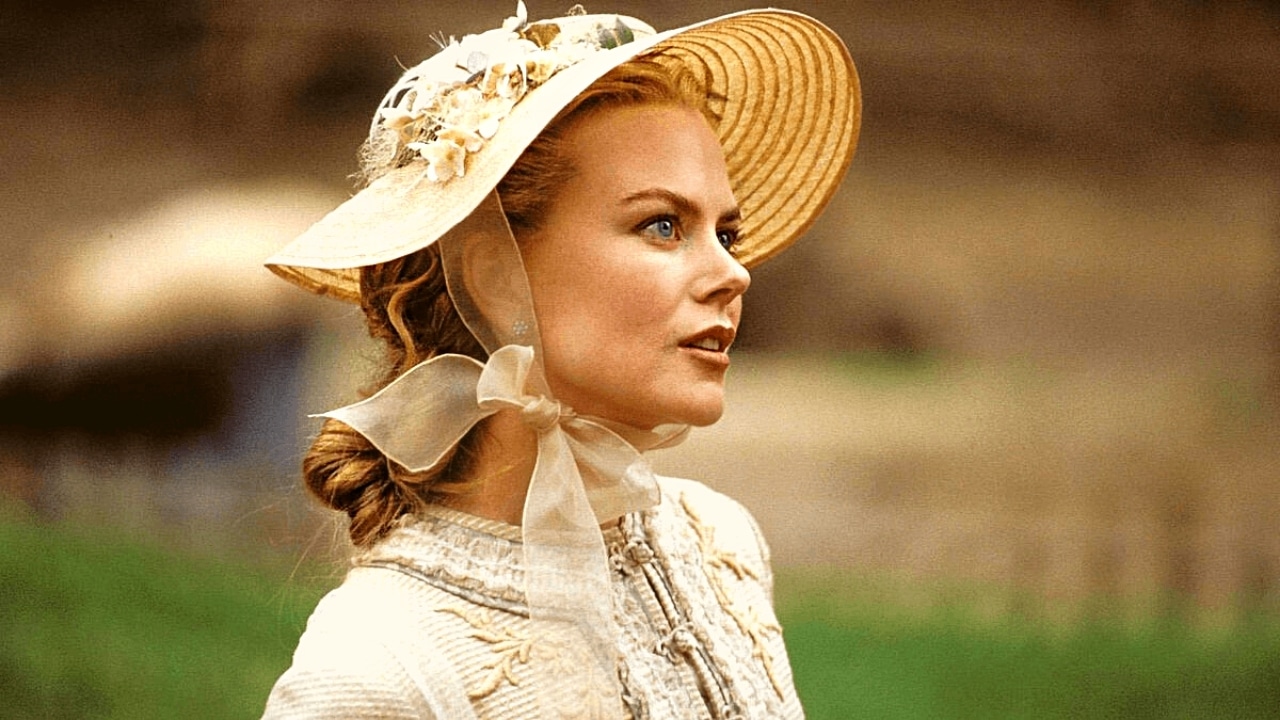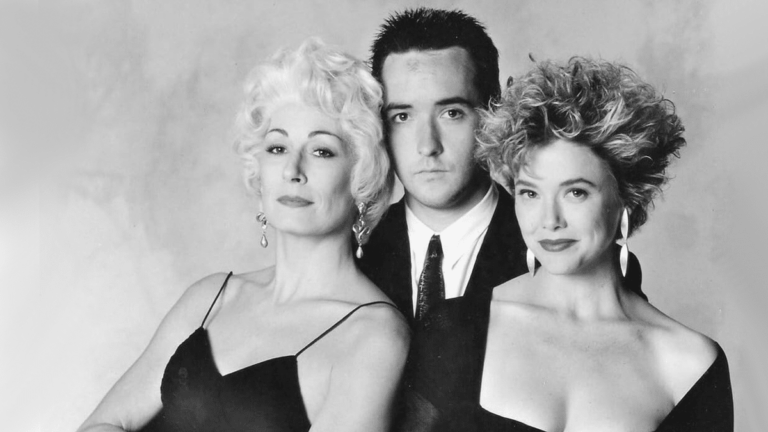15 Popular Books That Were Made Into Bad Movies

Every movie fan knows that Jaws and The Godfather made cinematic perfection from literary pulp. But for every one of these successes, there are three movies that made a mess of their venerable source material.
It’s not just that “the book was better” because novels can devote more time and space to rich subplots and interior monologues. No, these films missed the point of the books that inspired them, failing to understand the basic themes and appeals, let alone their structure.
Eat, Pray, Love (2010)

Writer Elizabeth Gilbert funded her post-divorce trip around the world with advances from her publisher, making the 2006 memoir Eat, Pray, Love feel less like a journey of self-discovery and more like a job. Still, Gilbert’s prose had enough charm to win over even skeptics, something that the film by director Ryan Murphy failed to capture.
Julia Roberts plays Gilbert in the movie Eat, Pray, Love and she stars alongside greats such as Javier Bardem and Richard Jenkins. But the movie magnifies the main figure’s privilege, making the trip seem selfish and Gilbert’s revelations banal.
Watchmen (2009)

Defenders of director Zack Snyder’s take on the graphic novel by Alan Moore and Dave Gibbons always point to the film’s adherence to the source material. Although he alters the book’s ending, Snyder faithfully recreates panels and pages from Watchmen.
While true, Snyder somehow manages to miss the Watchmen‘s point while sticking to the pictures. In place of Moore and Gibbons’s study of impotence and global politics, Snyder praises powerful people for their great strength.
The Great Gatsby (1974, 2013)

F. Scott Fitzgerald’s 1925 novel The Great Gatsby has a legitimate claim on being the Great American Novel, thanks to its canny depiction of the American Dream and empty mythmaking. So it’s no surprise that the book has been produced on stage and screen, made into a movie four times.
All four movies failed in different ways; a fact made clear in the two most recent versions. The 1974 movie has perfect casting with Robert Redford as Gatsby, but its dull execution takes at face value Nick Carraway’s unreliable narration in the novel.
The 2013 version by Baz Luhrmann goes for all spectacle, ignoring the way that Carraway (Sam Waterston in 1974, Tobey Maguire in 2013) distances himself from the events.
The Dark Tower (2017)

As anyone who has heard his comments about Stanley Kubrick’s movie The Shining knows, Stephen King has a strange relationship with the movies made from his books. King tends to be effusive in praise for the movies at first but often backs away later.
If there’s any adaptation from which King should run, it’s The Dark Tower, directed by Nikolaj Arcel and written by a slew of contributors. Arcel and Co. take King’s metatextual fantasy epic and transform it into anonymous blockbuster schlock, wasting compelling leads in Idris Elba and Matthew McConaughey.
The Stepford Wives (2004)

Ira Levin’s 1972 satirical thriller The Stepford Wives already led to a great movie from 1975, a true cult classic about suburban women replaced by automatons to please their husbands. The 1975 film captures the book’s balance of dread and outrageous humor, but the 2004 goes all the way in the latter direction.
The 2004 film has a reliable director in Frank Oz and an ideal lead in Nicole Kidman as a perfect icy blonde. But the movie plays more like a sitcom than a satire, losing the appeal of the book in favor of bland jokes and obvious observations.
The Cat in the Hat (2003)

In 1966, animation legend Chuck Jones showed the world how to bring Dr. Seuss into other media. How the Grinch Stole Christmas kept Theodor Geisel’s distinctive drawings and gift for language, and limited the run time to 26 minutes.
Every attempt to make a live-action feature out of Dr. Seuss fails on all of those accounts, none more so than 2003’s The Cat in the Hat. In place of the anarchic whimsy of the book, director Bo Welch substitutes gaudy cynicism, encapsulated with a dire performance by Mike Myers as the Cat.
Persuasion (2022)

Released in 1817, Persuasion was Jane Austen’s last novel and perhaps her most romantic. The story of love lost and refound between middle-aged couple Anne Elliot and Frederick Wentworth has room for Austen’s signature wit but puts the longing first.
Most movie versions understand that quality, but not the 2022 Netflix flick directed by Carrie Cracknell. Dakota Johnson, never one to disappear into a role, plays a too-young and too-snarky Anne Elliot, complete with self-aware fourth wall breaks. Cracknell and her team take a rich and romantic tale and turn it into forgettable fluff.
The Lovely Bones (2009)

By 2009, New Zealand director Peter Jackson had already done the impossible and turned J.R.R. Tolkien’s dense Lord of the Rings novels into three faithful, and money-earning, epics. So he seemed like the ideal filmmaker to bring to the screen Alice Sebold’s fantasy novel The Lovely Bones.
Where the novel focuses on a murdered girl who watches her family and killer from the afterlife, Jackson has no interest in the central pathos. Instead, he drowns the plot in garish special effects, from digital imagery to star Stanley Tucci’s ill-advised make-up.
The Bonfire of the Vanities (1990)

Tom Wolfe’s 1987 novel The Bonfire of the Vanities turned a dyspeptic eye toward the greed decade, diagnosing the excesses of the era. It’s ironic, then, that the 1990 film version by Brian De Palma fails because it gives into its own excesses.
De Palma has a great cast, with Tom Hanks, Bruce Willis, and Michelle Pfeiffer as the central trio. But De Palma has never been known for his restraint, and he pushes every aspect far past good taste. The result is an inert mess, too complicit in its own selfishness to diagnose the shortcomings of others.
The Scarlet Letter (1995)

Without question, Nathaniel Hawthorne’s 1850 historical novel The Scarlet Letter, about scandal among 17th-century Puritans, does have its steamy aspects But Hawthorne puts almost all of his attention on the inner life of Reverend Arthur Dimmesdale, the illicit and secret lover of Hester Prynne.
The 1995 movie by Roland Joffé can’t understand Dimmesdale’s inner struggle outside of scene-chewing rants designed for Gary Oldman. Instead, he treats the book as a racy thriller, with lots of intimate scenes with Oldman’s Dimmesdale and Demi Moore’s Prynne.
I Am Legend (2007)

The Richard Matheson novel I Am Legend already had two well-received, if not-so-faithful movies when the 2007 version came out. 1964’s The Last Man on Earth pits Vincent Price against ghoulish invaders, while 1971’s The Omega Man starred Charlton Heston as a virile survivor.
The 2007 adaptation directed by Francis Lawrence kept the title of the 1954 novel and stars a magnetic Will Smith as the one human left after everyone else transformed into mutants. But Lawrence cannot imagine Smith as anything other than a straightforward hero, which undermines the I Am Legend‘s ironic title.
Miss Peregrine’s Home for Peculiar Children (2016)

The 2011 novel Miss Peregrine’s Home for Peculiar Children by Ransom Riggs feels like the X-Men for emo kids, for those who would rather watch Tim Burton movies than the average Marvel fare.
So it seemed like a home run when Burton signed on to make the movie version, along with Eva Green as the title caretaker and Samuel L. Jackson as the creepy villain. But Burton has already become a parody of himself, and not even he can match the tone of the book, a tone inspired by Burton’s other films.
It: Chapter Two (2019)

The first part of It worked not so much because it translated the Stephen King tome from 1986, but because it captures the nostalgic feeling of King’s work, as refracted through shows such as Stranger Things. The first film had moments of cosmic horror, but it felt like a memory of a summer day.
It: Chapter Two shifts its focus to the leads as adults in the present day and thus loses the sense of nostalgia. Director Andy Muschietti and screenwriter Gary Dauberman have no idea how to adjust for these changes, and thus fill the movie with terrible effects and ill-advised jokes, squandering the goodwill of its predecessor.
Cold Mountain

Released in 1997, Charles Frazier’s Cold Mountain is literary fiction with a capital L and a capital F. The story of a deserter from the Confederate Army making his way back home draws from The Odyssey and has big thoughts about war, humanity, and love.
So it’s easy to understand why artsy director Anthony Minghella would translate the work into obvious Oscar bait. But Minghella goes too far into grabbing respectability, overstuffing the movie with stars and cameos, and suffocating the themes with self-seriousness.
The Turning (2020)

Henry James’s novella The Turn of the Screw is a classic of psychological horror because it walks the line between supernatural scares and an unreliable narrator’s breakdown. Told from the perspective of a governess who fears that a ghost is coming for her two young charges, James’s work gives readers no way to tell what is real or what is in her head.
That reliance on the narrator poses a challenge for anyone trying to adapt The Turn of the Screw, even if the 1961 version The Innocents, directed by Jack Clayton does a great job of it. 2020’s The Turning, directed by Floria Sigismondi, tries to replicate the unreliable narrator but does so by being just unclear, resulting in a movie that feels incomplete and confusing.





